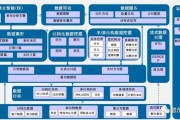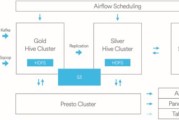标题:大数据架构所需的关键技能和知识大数据架构是指为了处理和分析大规模数据而设计的系统架构。在构建大数据架构时,需要具备一些关键的技能和知识,以确保系...
2024-05-22 453 大数据架构是做什么 大数据架构师百度百科 大数据架构的五个关键技术 大数据架构入门教程 大数据架构需要会什么技能
In today's digital age, harnessing the power of data has become imperative for organizations across various industries. Big data architecture plays a pivotal role in this endeavor, providing a structured framework for the collection, storage, processing, and analysis of large volumes of data. Let's delve into the key components and divisions of big data architecture:
Big data architecture begins with identifying and integrating diverse data sources. These sources may include structured data from databases, semistructured data from logs and streams, and unstructured data from social media, sensors, or multimedia sources.
Data ingestion involves capturing and importing data from various sources into the big data ecosystem. This process often employs tools like Apache Kafka, Apache Flume, or AWS Kinesis to handle highvelocity data streams efficiently.
The storage layer is responsible for storing vast amounts of data in a scalable and faulttolerant manner. It encompasses both traditional storage solutions like relational databases (e.g., MySQL, PostgreSQL) and distributed file systems like Hadoop Distributed File System (HDFS) or cloudbased storage such as Amazon S3, Google Cloud Storage.
Data processing involves transforming raw data into valuable insights through various techniques such as batch processing, stream processing, and realtime processing. Technologies like Apache Spark, Apache Flink, and Apache Storm are commonly used for this purpose.
Data management focuses on ensuring data quality, security, and governance throughout its lifecycle. This includes tasks such as data cleansing, metadata management, access control, and compliance with regulatory standards like GDPR or CCPA.
The analytics layer encompasses tools and platforms for performing advanced analytics, including descriptive, diagnostic, predictive, and prescriptive analytics. Technologies such as Apache Hadoop, Apache Hive, Apache HBase, and Elasticsearch facilitate efficient data querying and analysis.
Visualization and reporting tools enable stakeholders to gain actionable insights from the analyzed data. Platforms like Tableau, Power BI, and Apache Superset provide intuitive interfaces for creating interactive dashboards, charts, and reports.
Data governance ensures that data assets are managed responsibly, adhering to policies and regulations. It involves establishing data stewardship, defining data lineage, and implementing security measures such as encryption, access controls, and auditing.
Scalability and performance are critical considerations in big data architecture, especially as data volumes continue to grow. Utilizing distributed computing frameworks, horizontal scaling, and optimization techniques help maintain system efficiency and responsiveness.

Organizations must decide whether to deploy their big data infrastructure onpremises or leverage cloud services. While onpremises solutions offer greater control and security, cloud platforms like AWS, Google Cloud, and Azure provide scalability, flexibility, and managed services, reducing operational overhead.
Big data architecture serves as the foundation for extracting actionable insights from vast and complex data sets. By understanding its key components and divisions, organizations can design robust and scalable solutions tailored to their specific needs. Embracing a holistic approach to big data architecture empowers businesses to unlock the full potential of their data assets, driving innovation, efficiency, and competitive advantage in the digital era.
This comprehensive overview provides insights into the intricacies of big data architecture, guiding organizations towards effective implementation and utilization of their data resources.
标签: 大数据架构是做什么 大数据的架构体系是什么 大数据架构有几种 大数据架构选型
相关文章

标题:大数据架构所需的关键技能和知识大数据架构是指为了处理和分析大规模数据而设计的系统架构。在构建大数据架构时,需要具备一些关键的技能和知识,以确保系...
2024-05-22 453 大数据架构是做什么 大数据架构师百度百科 大数据架构的五个关键技术 大数据架构入门教程 大数据架构需要会什么技能

大数据架构商业之路随着信息时代的到来,大数据已成为各行各业的核心竞争力之一。构建有效的大数据架构不仅可以提升企业的数据处理能力,还能为业务决策提供有力...
2024-05-12 675 大数据架构是做什么 大数据 架构 大数据业务架构 大数据架构是什么意思

标题:关于大数据架构,你需要掌握的关键知识和技能大数据架构是指为了有效地管理和处理大规模数据集而设计的一种系统架构。在构建大数据架构时,需要掌握以下关...
2024-05-08 298 大数据架构的五个关键技术 大数据架构是做什么 大数据架构入门教程 大数据架构需要会什么技能 大数据架构师是干什么的